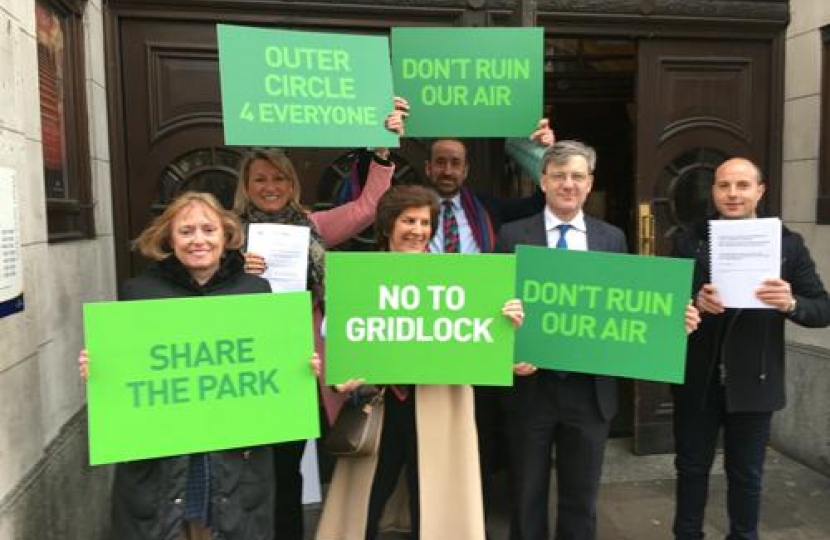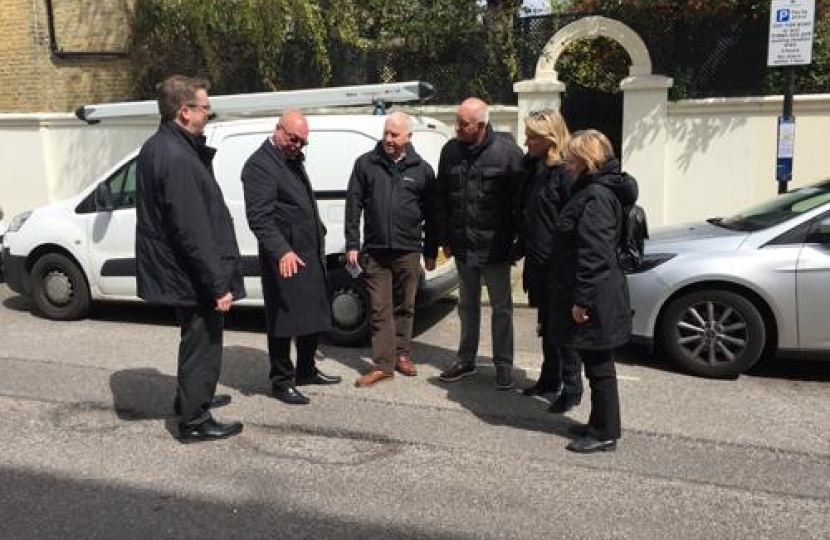Petition shows strength of feeling about CS11
Thank you to all those residents who took part in the consultation and attended the public meetings organised by your local Councillors in relation to the proposed new cycle superhighway CS11 planned to cut through St John’s Wood. The scheme generated a lot of interest and resistance owing to the plan to close the gates into Regent’s Park and change the layout to the Swiss Cottage gyratory which would result in a displacement of traffic within NW8.
The petition, which attracted over 4,000 signatures was handed in to the Full Council at a recent meeting.
Cllr Lindsey Hall said: "Everyone supports improved cycling safety. What we don't support is increased gridlock, rat runs and the worsening of air pollution for all of those living in the local area."
We now await the official results of the consultation from TfL and the views of the new Mayor of London who will ultimately be responsible for its outcome. You can be assured your Abbey Road Councillors will continue to be lobbying for the interests of our residents.
Barracks re-development: Concerns over HGVs
Cllrs Peter Freeman and Lindsey Hall have been working hard to ensure local concerns over the scale and impact of the demolition and building of the Barracks site are carefully taken into consideration in the planning stages and prior to construction next Autumn. We are confident we will find the cleverest and least harmful solution to the particular problem of HGVs entering and exiting our residential streets.
Potholes fixed in 24 hours thanks to Councillors' intervention
Following a recent 'walkabout' and street-by-street inspection with WCC's Senior Street Management Team, Cllrs Freeman and Hall were able to pin-point localised problems such as potholes, kerb and pavement repairs and speeding issues in Abercorn Place and St Johns Wood.
Within 24 hours potholes at the junction of Abercorn Place and Hamilton Terrace and a the junction with Abbey Road were dealt with within 24 hours.
Westminster Makes History With ‘Outstanding’ Children’s Services
Conservative-run Westminster City Council has made history as the first authority in the country to receive an ‘outstanding’ rating from OFSTED for its Children’s Services.
OFSTED said that Westminster’s Children’s Services Department showed ‘exemplary application’ of the ‘focus on practice’ model and praised the Council for its leadership, innovation and expertise in this area.
Inspectors commented that some of the innovative work they saw at Westminster will be used as an exemplar for other authorities to drive up standards across the country.
Cabinet Member for Children & Young People, Councillor Danny Chalkley, said: ‘I am very proud that Westminster is leading the way on Children’s Services and I think that OFSTED’s rating is testament to the excellent team we have in place and the exceptional work that they do for our children and young people across the Borough’.
Deputy Cabinet Member for Children & Young People, Councillor Paul Church, said: ‘Westminster’s outstanding OFSTED for our Children’s Services shows that this Council doesn’t only make history, it makes futures, too, for all of the children and young people that we serve right across the Borough’.
Prioritising Cleaner, Safer Streets
Conservatives in Westminster have welcomed a 16% reduction in litter on Westminster streets and 85 new schemes of work to be carried out on carriageways and footways. The Council has also allocated specific funds for repairing gulleys and potholes in the city.
Residents have noticed a positive difference with litter complaints down by 27%. The results have also been endorsed by the Independent Group 'Keep Britain Tidy' which shows Westminster compares very favourably as compared to other council's in London.
The Council has managed to increase efficiencies by improving back office functions and moving toward a ‘digital city’ model, with 75% of services now available online. Bulky waste collection saw a 25% increase since going digital and webforms now make up 45% of reports to the council.
Westminster introduces its Community Infrastructure Levy
Westminster City Council implemented its Community Infrastructure Levy (CIL) on 1 May 2016 to supplement s106 agreements. This is a fixed charge on development to help fund infrastructure such as transport schemes and schools which the council, local community and neighbourhoods require to help accommodate new growth from development.
The CIL is to be charged on a square metre rate of net additional floor space created if the development creates 100 square metres or more of net additional floorspace.
The key drivers of the CIL charge for a development are:
- If the development is in an area deemed prime, core or fringe
- the rates within the tariff adopted and
- the use of the property
Mindful of the ever changing nature of Westminster, the Council will review its CIL biennially with the first review in 2018. This simple, straight forward policy would allow developers greater clarity as to the receipts due to the council. A specified portion of proceeds generated by development in each neighbourhood will be spent on priorities agreed with the local community. Specifically 15% of funds will be directed within neighbourhoods without a neighbourhood plan, rising to 25% uncapped in neighbourhoods with a neighbourhood plan. Westminster has set out a draft list (known as a ‘Regulation 123 list') of infrastructure projects or types of infrastructure that CIL receipts will be used to fund. This list will therefore be a key driver in the development of necessary infrastructure within Westminster and includes crime and anti-social behaviour; education facilities; health facilities and public realm improvements amongst others.







